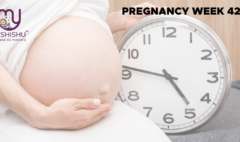Quadruple Test in Pregnancy: A Reliable Guide
Quadruple Test in Pregnancy: A Reliable Guide
Introduction
Welcome to a guide on the topic of Quadruple Test in Pregnancy. As you embark on the incredible journey of pregnancy, you’re entering a world of wonder, anticipation, and perhaps a touch of apprehension. Amidst the excitement of nurturing new life within you, there comes a plethora of decisions to make, especially when it comes to prenatal care. One crucial aspect of this care is the quadruple test in pregnancy, a screening tool designed to assess the risk of certain genetic conditions in your developing baby.
In this blog, we aim to provide you with a comprehensive understanding of the quadruple test in pregnancy, empowering you to make informed decisions and navigate your pregnancy journey with confidence. We understand that pregnancy is a deeply personal and transformative experience, and our goal is to arm you with the knowledge and support you need to make the best choices for yourself and your baby.
Join us as we delve into the intricacies of the quadruple test in pregnancy, exploring its purpose, procedure, implications, and everything in between. Whether you’re curious about what the test entails or seeking guidance on how to interpret the results, we’re here to provide you with the information and reassurance you need.
As you read through this blog, remember that you are not alone on this journey. Your healthcare providers, loved ones, and a wealth of resources are here to support you every step of the way. Together, let’s embark on this journey of discovery, empowerment, and celebration of new life.
Table of Contents
What is the Quadruple Test in Pregnancy?
The quadruple test in pregnancy, also known as the quad screen or quadruple marker test, is a vital component of prenatal care aimed at assessing the risk of specific chromosomal abnormalities and neural tube defects in the developing fetus. It’s a non-invasive screening test commonly offered to expectant mothers between the 15th and 20th weeks of pregnancy, providing valuable insights into the health and well-being of the baby.
At its core, the quadruple test in pregnancy analyzes specific substances in the mother’s blood to evaluate the likelihood of certain genetic conditions. These substances include alpha-fetoprotein (AFP), human chorionic gonadotropin (hCG), unconjugated estriol (uE3), and inhibin A. Each of these markers plays a distinct role in the screening process, contributing to the overall assessment of fetal health.
- Alpha-fetoprotein (AFP): Elevated levels of AFP in maternal blood may indicate an increased risk of neural tube defects, such as spina bifida or anencephaly. Conversely, lower-than-expected levels may suggest a higher risk of Down syndrome or other chromosomal abnormalities.
- Human Chorionic Gonadotropin (hCG): This hormone, produced by the placenta, helps support the developing pregnancy. Abnormal levels of hCG may be associated with an increased risk of chromosomal abnormalities, particularly Down syndrome.
- Unconjugated Estriol (uE3): Estriol is a form of estrogen produced by both the fetus and the placenta during pregnancy. Abnormal levels of unconjugated estriol may indicate an increased risk of chromosomal abnormalities or other pregnancy complications.
- Inhibin A: This protein, produced by the placenta, helps regulate hormone production during pregnancy. Elevated levels of inhibin A may be associated with an increased risk of chromosomal abnormalities, particularly Down syndrome.
Together, the results of the quadruple test in pregnancy provide valuable information about the likelihood of certain genetic conditions in the developing fetus, allowing healthcare providers to offer appropriate counseling and guidance to expectant mothers. It’s important to note that while the quadruple test in pregnancy is an effective screening tool, it does not provide a definitive diagnosis of genetic conditions. If the test results indicate an increased risk, further diagnostic testing, such as amniocentesis or chorionic villus sampling, may be recommended to confirm or rule out the presence of a genetic condition.
In summary, the quadruple test in pregnancy is a valuable tool in prenatal care, offering expectant mothers valuable insights into the health and well-being of their developing baby. By providing information about the risk of certain genetic conditions, the quadruple test in pregnancy empowers expectant mothers to make informed decisions about their pregnancy and prepare for any potential challenges that may arise.
Why is the Quadruple Test Important?
The quadruple test in pregnancy holds significant importance in prenatal care as it serves as a valuable screening tool for assessing the risk of specific chromosomal abnormalities and neural tube defects in the developing fetus. Understanding the importance of the quadruple test in pregnancy can help expectant mothers and healthcare providers make informed decisions about prenatal care and prepare for any potential challenges that may arise during pregnancy. Here are several key reasons why the quadruple test in pregnancy is important:
- Early Detection of Genetic Conditions: One of the primary objectives of the quadruple test in pregnancy is to identify pregnancies that may be at increased risk of certain genetic conditions, such as Down syndrome, trisomy 18, and neural tube defects like spina bifida. By detecting these conditions early in pregnancy, healthcare providers can offer appropriate counseling and guidance to expectant mothers and facilitate timely interventions or treatment options as needed.
- Risk Assessment and Counseling: The results of the quadruple test in pregnancy provide valuable information about the likelihood or risk of specific genetic conditions in the developing fetus. This enables healthcare providers to offer comprehensive counseling to expectant mothers, helping them understand the implications of the test results and make informed decisions about their pregnancy. Counseling may include discussions about the potential outcomes of a high-risk result, available diagnostic testing options, and the emotional and practical considerations associated with each scenario.
- Facilitates Informed Decision-Making: Armed with information about the risk of certain genetic conditions, expectant mothers can make informed decisions about their prenatal care and pregnancy management. This may include decisions about whether to undergo further diagnostic testing, such as amniocentesis or chorionic villus sampling, to confirm or rule out the presence of a genetic condition. Additionally, the results of the quadruple test in pregnancy may influence decisions about medical interventions and pregnancy monitoring.
- Preparation for Parenting a Child with Special Needs: For expectant mothers who receive a high-risk result on the quadruple test in pregnancy indicating an increased likelihood of a genetic condition, the test provides an opportunity to prepare emotionally, psychologically, and practically for the possibility of parenting a child with special needs. This may involve seeking support from healthcare providers, connecting with support groups or organizations for parents of children with similar conditions, and developing a plan for accessing resources and services to support the child’s health and development.
- Empowers Expectant Mothers: By undergoing the quadruple test in pregnancy, expectant mothers are empowered with knowledge about their pregnancy and the health of their developing baby. This knowledge enables them to actively participate in their prenatal care, ask questions, and advocate for their own health and the well-being of their baby. Additionally, the quadruple test in pregnancy can alleviate anxiety and uncertainty for expectant mothers by providing reassurance about the health of their pregnancy or guiding them toward appropriate medical interventions if needed.
In summary, the quadruple test in pregnancy is an important component of prenatal care that provides valuable information about the risk of certain genetic conditions in the developing fetus. By facilitating early detection, risk assessment, the quadruple test in pregnancy plays a crucial role in supporting the health and well-being.
When is the Quadruple Test Recommended?
The quadruple test in pregnancy is typically recommended as part of routine prenatal care for all pregnant individuals, regardless of age or perceived risk factors. Healthcare providers typically offer the quadruple test in pregnancy between the 15th and 20th weeks of pregnancy, although the timing may vary depending on individual circumstances and healthcare provider preferences. Several factors contribute to the recommendation for the quadruple test in pregnancy:
- Screening for Genetic Conditions: The quadruple test in pregnancy is primarily used as a screening tool to assess the risk of specific chromosomal abnormalities and neural tube defects in the developing fetus. These conditions include Down syndrome (trisomy 21), trisomy 18 (Edwards syndrome), and neural tube defects such as spina bifida.
- Non-Invasive Nature: The quadruple test in pregnancy is a non-invasive screening test that involves a simple blood draw from the mother’s arm. Unlike diagnostic tests such as amniocentesis or chorionic villus sampling, which carry a small risk of complications, the quadruple test in pregnancy poses minimal risk to both the mother and the developing fetus.
- Comprehensive Screening Approach: The quadruple test evaluates multiple markers in the mother’s blood, including alpha-fetoprotein (AFP), human chorionic gonadotropin (hCG), unconjugated estriol (uE3), and inhibin A. By measuring these markers in combination, the quadruple test provides a more comprehensive assessment of the risk of certain genetic conditions than individual markers alone.
- Timing of Testing: The quadruple test is typically performed between the 15th and 20th weeks of pregnancy, providing a window of opportunity to assess the risk of genetic conditions before the baby is born. This timing allows expectant mothers to receive timely counseling and make informed decisions about their pregnancy based on the results of the test.
- Universal Screening Approach: The quadruple test is often recommended for all pregnant individuals as part of routine prenatal care, regardless of age or perceived risk factors. This universal screening approach ensures that all expectant mothers have access to important information about their pregnancy and the health of their developing baby.

How is the Quadruple Test Performed?
The quadruple test is a relatively simple and non-invasive screening procedure that involves a blood draw from the mother’s arm. Here’s a detailed overview of how the quadruple test is typically performed:
- Preparation: Prior to the test, expectant mothers may receive instructions from their healthcare provider regarding any specific preparations required. This may include fasting for a certain period before the test or avoiding certain medications that could affect the results.
- Blood Draw: The quadruple test begins with a blood draw, typically performed by a trained phlebotomist or healthcare professional. The blood draw is usually conducted in a clinical setting, such as a hospital laboratory or outpatient clinic. The healthcare provider will clean the skin over the vein in the mother’s arm with an antiseptic solution and then insert a sterile needle into the vein to collect a sample of blood.
- Sample Collection: A small amount of blood is collected into one or more vacuum tubes, depending on the specific laboratory requirements for the test.
- Labeling and Documentation: After the blood sample is collected, it is labeled with the mother’s identifying information, including her name, date of birth, and medical record number.
- Transportation to the Laboratory: Once the blood sample is collected and labeled, it is transported to the laboratory for analysis. Laboratory technicians will process the sample to measure the levels of specific markers in the mother’s blood, including alpha-fetoprotein (AFP), human chorionic gonadotropin (hCG), unconjugated estriol (uE3), and inhibin A.
- Analysis and Interpretation: In the laboratory, the blood sample undergoes analysis to measure the levels of each marker. The results are then interpreted based on established reference ranges and algorithms to assess the risk of specific chromosomal abnormalities and neural tube defects in the developing fetus.
Interpreting the Results of the Quadruple Test
- Alpha-Fetoprotein (AFP): Elevated levels of alpha-fetoprotein in maternal blood may indicate an increased risk of neural tube defects, such as spina bifida or anencephaly. Conversely, lower-than-expected levels of AFP may suggest a higher risk of chromosomal abnormalities, such as Down syndrome or trisomy 18.
- Human Chorionic Gonadotropin (hCG): Abnormal levels of human chorionic gonadotropin in maternal blood may be associated with an increased risk of chromosomal abnormalities, particularly Down syndrome. Elevated levels of hCG may indicate an increased risk, while lower-than-expected levels may suggest a lower risk.
- Unconjugated Estriol (uE3): Estriol is a form of estrogen produced by both the fetus and the placenta during pregnancy. Abnormal levels of unconjugated estriol in maternal blood may indicate an increased risk of chromosomal abnormalities or other pregnancy complications. Higher-than-expected levels may suggest a decreased risk, while lower levels may indicate an increased risk.
- Inhibin A: Elevated levels of inhibin A in maternal blood may be associated with an increased risk of chromosomal abnormalities, particularly Down syndrome. Conversely, lower-than-expected levels of inhibin A may suggest a lower risk.
Additional Common Questions
-
Is the quadruple test mandatory during pregnancy?
The quadruple test is not mandatory, but it is often recommended as part of routine prenatal care to assess the risk of certain genetic conditions in the developing fetus. While participation in screening tests is ultimately a personal decision, discussing the benefits and limitations of the quadruple test with your healthcare provider can help you make an informed choice about whether to undergo testing.
-
Does a high-risk result from the quadruple test mean my baby definitely has a genetic condition?
No, a high-risk result from the quadruple test does not mean that your baby definitely has a genetic condition. The quadruple test is a screening test, not a diagnostic test, and it provides information about the likelihood or risk of certain conditions. Further diagnostic testing, such as amniocentesis or chorionic villus sampling, may be recommended to confirm or rule out the presence of a genetic condition.
-
What are the next steps if I receive a high-risk result from the quadruple test?
If you receive a high-risk result from the quadruple test, your healthcare provider will discuss the implications of the result with you and offer guidance on next steps. This may include further diagnostic testing, such as amniocentesis or chorionic villus sampling, to confirm or rule out the presence of a genetic condition. Your healthcare provider will provide personalized counseling and support based on your individual circumstances.
-
Can the quadruple test predict all genetic conditions?
No, the quadruple test is designed to assess the risk of specific chromosomal abnormalities and neural tube defects, such as Down syndrome, trisomy 18, and spina bifida. While the quadruple test provides valuable information about these conditions, it does not screen for all genetic conditions. Your healthcare provider can discuss other screening or diagnostic tests that may be appropriate based on your medical history and risk factors.
Conclusion
In conclusion, the quadruple test serves as a valuable tool in prenatal care, offering expectant mothers insights into the health of their developing baby. Whether you choose to undergo the test or not, know that you have the support of your healthcare provider and loved ones every step of the way. Your well-being and that of your baby are paramount, and by staying informed and making decisions that feel right for you, you can navigate your pregnancy journey with confidence and peace of mind. Embrace this transformative time with strength and positivity, knowing that you are supported and empowered to make the best choices for you and your baby.

want to know more
Explore Our Courses











